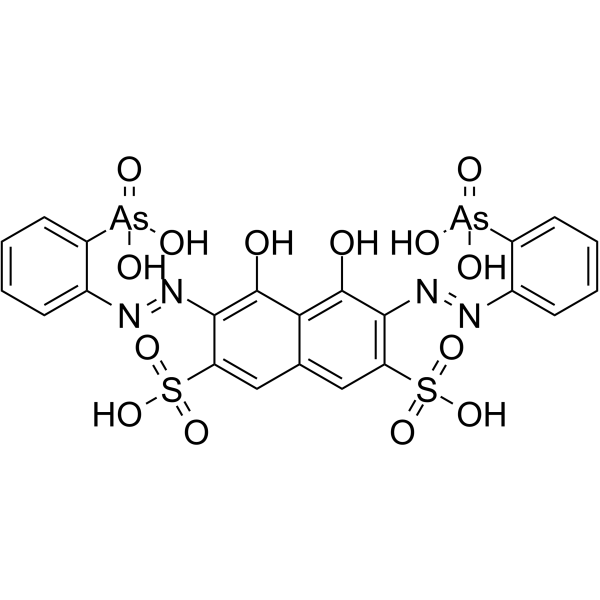A microchip sensor for calcium determination.
P Caglar, S A Tuncel, N Malcik, J P Landers, J P Ferrance
Index: Anal. Bioanal. Chem 386(5) , 1303-12, (2006)
Full Text: HTML
Abstract
A newly designed glass-PDMS microchip-based sensor for use in the determination of Ca(2+) ions has been developed, utilizing reflectance measurements from arsenazo III (1,8-dihydroxynaphthalene-3,6-disulfonic acid-2,7-bis[(azo-2)-phenyl arsenic acid]) immobilized on the surface of polymer beads. The beads, produced from cross-linked poly(p-chloromethylstyrene) (PCMS), were covalently modified with polyethylenimine (PEI) to which the Arsenazo III could be adsorbed. The maximum amount of Arsenazo III which could be immobilized onto the PEI-attached PCMS beads was found to be 373.71 mg g(-1) polymer at pH 1. Once fabricated, the beads were utilized at the detection point of the microfluidic sensor device with a fiber optic assembly for reflectance measurements. Samples were mobilized past the detection point in the sensor where they interact with the immobilized dye. The sensor could be regenerated and re-used by rinsing with HCl solution. The pH, voltage, linear range, and the effect of interfering ions were evaluated for Ca(2+) determination using this microchip sensor. At the optimum potential, 0.8 kV, and pH 9.0, the linear range of the microchip sensor was 3.57 x 10(-5) - 5.71 x 10(-4) M Ca(2+), with a limit of detection (LOD) of 2.68 x 10(-5) M. The microchip biosensor was then applied for clinical analysis of calcium ions in serum with good results.
Related Compounds
| Structure | Name/CAS No. | Molecular Formula | Articles |
|---|---|---|---|
 |
Arsenazo III
CAS:1668-00-4 |
C22H18As2N4O14S2 |
|
Octylphenol induces changes in glycosylation pattern, calciu...
2015-04-01 [Toxicol. In Vitro 29(3) , 529-37, (2015)] |
|
Flow injection online spectrophotometric determination of ur...
2013-02-01 [Environ. Monit. Assess. 185(2) , 1613-26, (2013)] |
|
Influence of Quil A on liposomal membranes.
2014-11-20 [Int. J. Pharm. 475(1-2) , 138-46, (2014)] |
|
Assessments of feline plasma biochemistry reference interval...
2015-08-01 [J. Feline Med. Surg. 17 , 667-79, (2015)] |
|
[IP3-sensitive Ca(2+)-channels of endoplasmic reticulum in s...
[Ukr. Biokhim. Zh. 85(5) , 27-36, (2013)] |